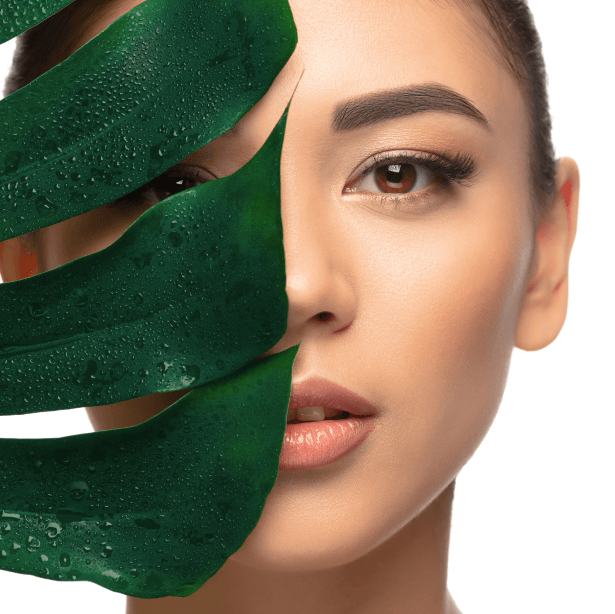In the quest for timeless beauty and skin rejuvenation, the winds of medical aesthetics blow toward ground-breaking technologies. Among these advancements stands Sculptra, an injectable dermal filler that’s swiftly earned its place in the world of cosmetic procedures for its unique regenerative properties. From refining facial contours to addressing volume loss in age-related areas, Sculptra has redefined the possibilities for facial sculpting and rejuvenation. If you’re intrigued by the potential of this treatment, read on for the comprehensive guide to everything Sculptra.
What is Sculptra?
Sculptra is an injectable poly-L-lactic acid (PLLA) that’s designed to gradually stimulate the body’s natural collagen production and restore lost facial volume. It’s not just a typical facial filler – it’s a bioactivator that encourages the skin to regenerate its underlying support structure over time.
What Makes Sculptra a Unique Dermal Filler?
Unlike hyaluronic acid fillers, which provide immediate results by adding volume to the treated areas, Sculptra works gradually by kickstarting the body’s collagen production, resulting in a more natural and refined enhancement. It’s known for its long-lasting effects, which can typically last up to two years or more.
How Does Sculptra Work?
Once injected, Sculptra stimulates the body to produce more collagen – the essential building block that gives skin its fullness and firmness. Over several weeks, you’ll notice a subtle change as the skin progressively thickens and the treated areas become plumper.
What Is Sculptra Used For?
Sculptra is utilized for a wide range of purposes, from facial rejuvenation to body contouring. It’s often used to treat sunken areas caused by aging or weight loss, such as the cheeks, chin, and temples. It can also address deep facial lines and folds, and it’s an exceptional treatment for refining the skin texture over time.
Where Is Sculptra Injected?
Sculptra is injected in the deep dermis or subcutis depending on the desired outcome. This specialized technique requires a practitioner who understands the precise depth and volume required for different facial areas.
Which Areas of the Face Can Be Treated With Sculptra?
Sculptra can effectively address the whole face, from the forehead to the chin. It’s especially potent in volumizing flat cheeks, filling hollow temples, and enhancing the jawline.
Sculptra for Age-Related Fine Lines and Facial Volume Loss
As we age, our skin loses collagen, elasticity, and volume, leading to a more aged appearance. Sculptra is a valuable ally in combating these signs by reigniting collagen production, lifting the skin, and smoothing out fine lines and wrinkles.
Sculptra for Acne Scars
For individuals with acne scars, Sculptra can be a game-changer. By promoting the development of new collagen, Sculptra can help minimize the appearance of these scars, smoothening and evening out the skin’s texture.
Sculptra for Cheek Augmentation
High, defined cheekbones have long been the hallmark of a youthful face. Sculptra is adept at enhancing and rebuilding the cheeks, helping restore the contour and fullness of the midface.
Which Is Better for Cheek Augmentation: Juvederm Voluma XC or Sculptra?
Both Juvederm Voluma XC and Sculptra are effective for cheek augmentation, but the choice between them depends on factors such as the patient’s anatomy, the doctor’s preference, and desired longevity. Voluma XC offers instant results, while Sculptra gradually provides a more enduring effect.
How Much Sculptra Is Needed for the Face?
The volume of Sculptra needed varies for each person and the area to be treated. A typical treatment could require several vials, but this number is always determined by a medical professional during the consultation.
Sculptra for Body Contouring
Beyond the face, Sculptra is increasingly being used for body contouring to address issues such as cellulite and stretch marks. It’s an off-label use that has shown promising results in the right candidates.
Sculptra for Hand Rejuvenation
Aging can make the hands lose volume, making veins and tendons more prominent. Sculptra can subtly plump the hands, minimizing this effect and creating a more youthful appearance.
Sculptra for Neck Rejuvenation
Neck skin is thin and susceptible to aging. Sculptra can rejuvenate the neck by gradually enhancing the skin’s structure, leading to a firmer and more contoured look.
What Is Sculptra for the Buttocks?
The latest application of Sculptra is for non-surgical buttock augmentation. Referred to as the “Sculptra Butt Lift,” it promises to create a smoother, rounder, and more lifted buttock without the need for invasive surgery.
How Much Sculptra Is Needed for the Buttocks?
The Sculptra Butt Lift usually requires several vials, and the quantity depends on the amount of augmentation sought. The treatment may be staged over a few sessions for the best results.
What Is Sculptra for Hip Dips?
Sculptra for hip dips is aimed at filling in the ‘dips’ between the high hip and lower hip to create a smoother transition. This can be an effective way to achieve a more curvaceous silhouette.
How Much Sculptra Is Needed for the Hips?
The volume of Sculptra needed for hip augmentation can vary, and multiple treatments may be required for the desired outcome.
Sculptra Aesthetic Treatment for Cellulite
Managing cellulite can be a significant challenge. Sculptra as a treatment for cellulite aims to thicken the skin and improve its structure, which can lead to a reduction in the appearance of cellulite in treated areas.
Sculptra Treatment for Stretch Marks
By stimulating collagen production, Sculptra can help reduce the depth and severity of stretch marks, making them less noticeable over time. It’s a promising addition to the arsenal of treatments for this common skin issue.
How Do I Prepare for Sculptra Treatment?
Before your Sculptra session, it’s crucial to avoid medications and supplements that thin the blood, like aspirin, for a few days. Be sure to stay well-hydrated, and do not wear makeup or sunscreen to your appointment.
What Is Sculptra Treatment Like?
Sculptra is injected into the skin using a small needle. The procedure is generally well-tolerated, but a local anesthetic or numbing cream may be used to minimize discomfort.
What Are the Side Effects of Sculptra Injections?
The most common side effects include temporary injection site reactions, lumps, bumps, swelling, redness, and bruising. These typically resolve on their own over time.
How Much Does One Vial of Sculptra Cost?
The price of a single vial of Sculptra can vary widely depending on the region and the medical facility. Expect to pay several hundred to a thousand dollars per vial.
How Much Does Sculptra Treatment Cost?
The overall cost of Sculptra treatment varies based on the number of vials needed and the provider’s fees. A full treatment can range from several thousand to tens of thousands, especially for full-body enhancements.
Does Sculptra Work?
Yes, Sculptra works to stimulate collagen production and restore facial volume. Patients will require multiple treatments, spaced a few weeks apart, for the full effects to be visible.
How Long Does It Take for Sculptra to Work?
While some immediate results are visible due to the saline used to dilute the Sculptra for injection, the body’s collagen-building process takes around 6 to 8 weeks for initial results, with improvements continuing for several months.
Is Sculptra Permanent?
Sculptra is not a permanent filler. Although the added volume can last up to two years, the results gradually subside as the PLLA is metabolized and the stimulation of collagen production ceases.
How Long Does Sculptra Last?
The duration of Sculptra’s effects varies, but typically, results can last 18 to 24 months or more. Touch-up treatments may be recommended to maintain the desired look.
Does Sculptra Hurt?
The discomfort level during Sculptra injections is usually mild. Many providers offer a topical anesthetic to numb the area, and the procedure itself is quick.
Is Sculptra Safe?
When performed by a qualified and experienced professional, Sculptra is generally considered safe. However, like all medical procedures, it carries some risks. It’s essential to choose a credentialed provider and follow all pre- and post-treatment instructions.
When Do Sculptra Nodules Appear?
Sculptra nodules, which are palpable and non-visible but apparent when palpated in the treated area, can appear several months after treatment. These often resolve on their own but may need to be addressed if they persist.
Can Sculptra Be Dissolved?
Yes, Sculptra can be dissolved using the enzyme hyaluronidase. If there are any irregularities or if a patient is not satisfied with the results, hyaluronidase can help break down the PLLA, reverting the treated area to its pre-injection state.
Is Sculptra a Dermal Filler?
Sculptra is a type of dermal filler, but it differs from traditional hyaluronic acid fillers due to its collagen-stimulating effects.
Does Sculptra Migrate?
Sculptra is designed to stay where it is injected. Proper technique is essential to prevent migration and ensure that it works as intended.
Who Is a Good Candidate for Sculptra Injections?
Good candidates for Sculptra include those who are seeking a gradual and natural-looking enhancement. They should be in good health, have realistic expectations, and a consultation with a qualified professional will determine if Sculptra is appropriate for them.
Who Is Not a Candidate for Sculptra Aesthetic?
Those with a history of keloid scarring, infections, or skin conditions should not use Sculptra. Pregnant or breastfeeding women are also not candidates for this treatment.
What Is Sculptra Made Of?
Sculptra is made of poly-L-lactic acid (PLLA), a biocompatible and biodegradable synthetic substance.
Who Makes Sculptra?
Sculptra is manufactured by Galderma, a global company that specializes in dermatological treatments.
How Was Sculptra Developed?
Sculptra is the result of extensive research and development in the aesthetic medicine field. It has gained FDA approval for cosmetic use due to its efficacy and safety profile.
Is Sculptra Worth It?
For many, Sculptra is worth it due to its long-lasting results and natural approach to rejuvenating the skin. However, as with any cosmetic treatment, individual results may vary, and it’s important to weigh the benefits against the cost.
What Is the Process of Sculptra Treatment?
The Sculptra treatment process begins with a consultation to discuss goals and assess candidacy. The actual treatment consists of a series of injections, after which post-care instructions should be followed closely.
What Is the Downtime for Sculptra Treatment?
There’s minimal downtime associated with Sculptra injections. Some patients may experience redness, swelling, or bruising, but these symptoms typically resolve within a few days.
How Soon Can I Apply Makeup After Sculptra Injections?
You can typically apply makeup immediately after Sculptra injections to conceal any redness or mild bruising.
Can Sculptra Cause Cancer?
While any foreign substance in the body carries some level of risk, Sculptra has not been directly linked to an increase in cancer. However, as with any medical procedure, it’s essential to discuss potential risks with your doctor.
Can Sculptra Go Wrong?
There are potential complications associated with Sculptra, such as infection, asymmetry, lumps, and palpable nodules. Choosing a qualified professional for your treatment can minimize these risks.
Why Choose Dr. Mehreen Iqbal in Texas for Sculptra Injections?
Dr. Mehreen Iqbal is an expert in the field of cosmetic dermatology and has a wealth of experience with Sculptra injections. Her approach prioritizes patient safety and natural results. Located in Texas, her practice is a sought-after destination for those seeking expert care in aesthetic medicine.
Dive into the world of Sculptra with confidence, knowing that this comprehensive guide has armed you with the information you need to make an informed decision about your cosmetic enhancement. Remember, the key to a successful Sculptra experience lies in careful research, open communication with your provider, and realistic expectations. The regenerative power of Sculptra is waiting to help you achieve the rejuvenated, radiant look you desire.

